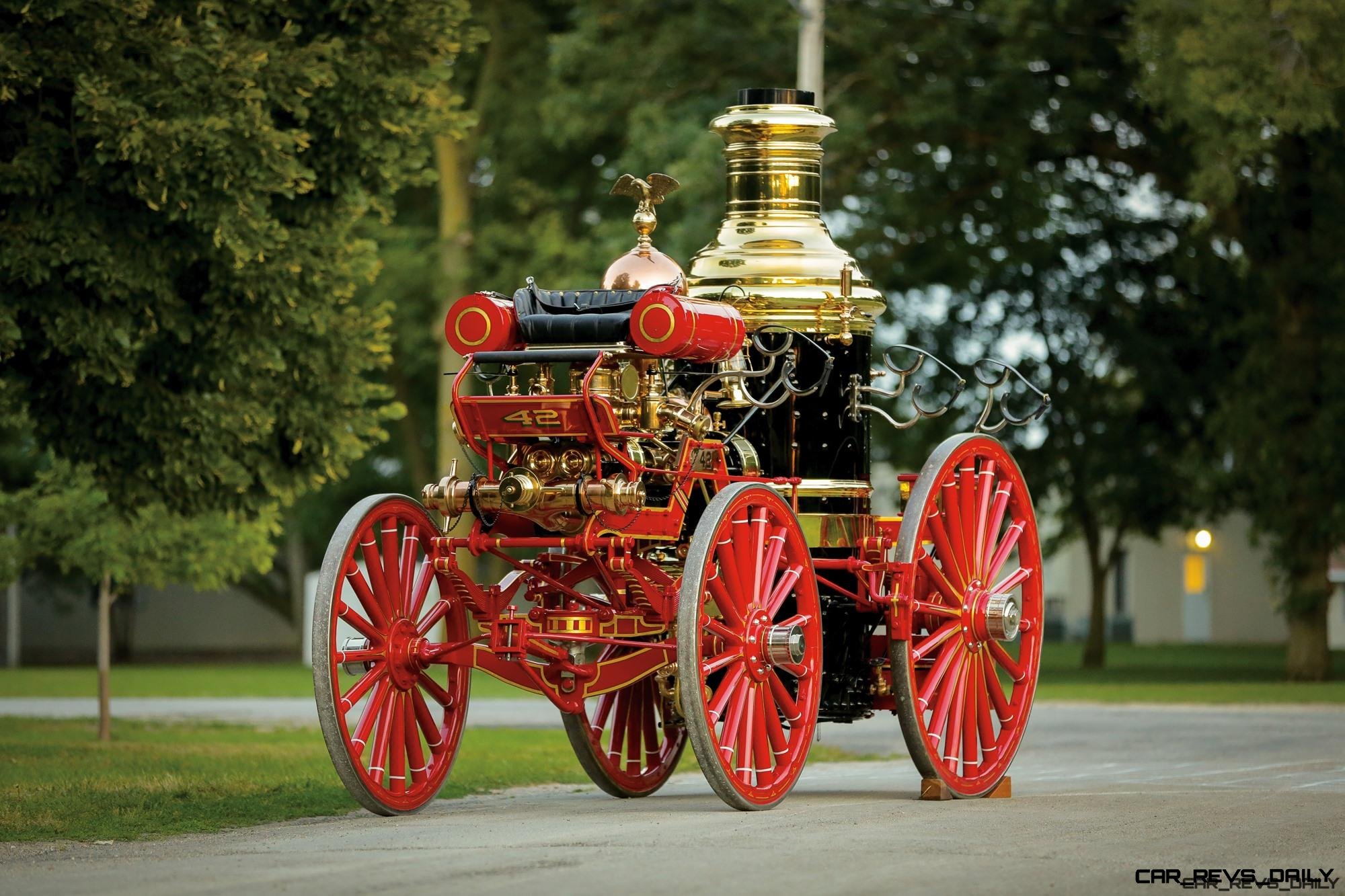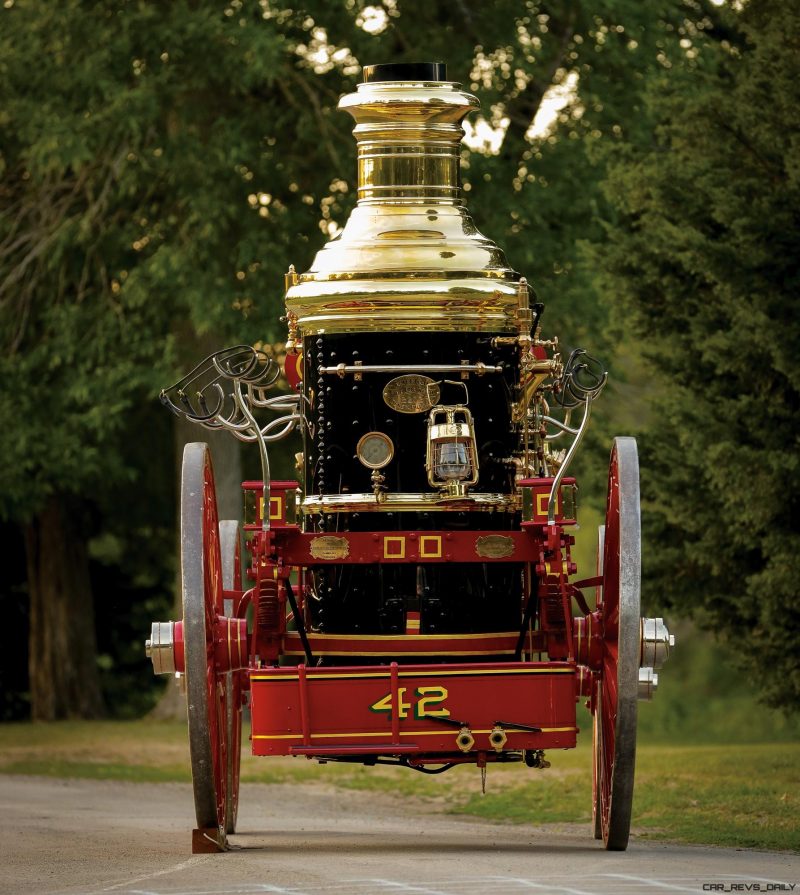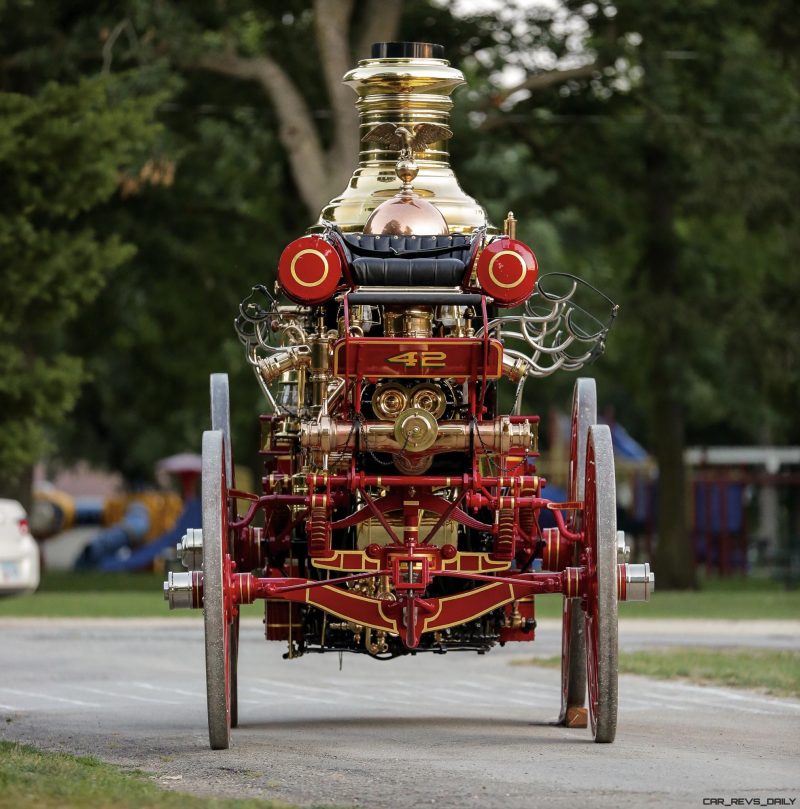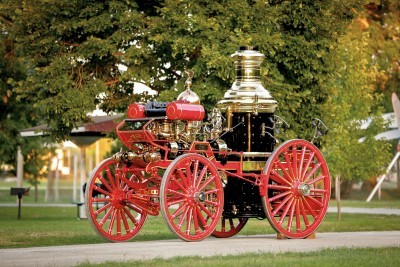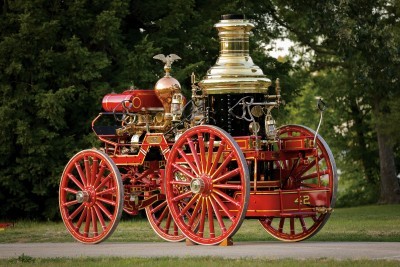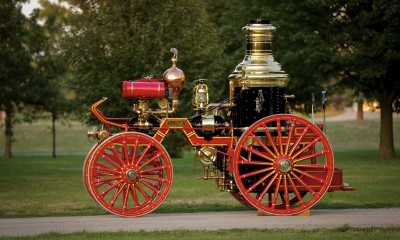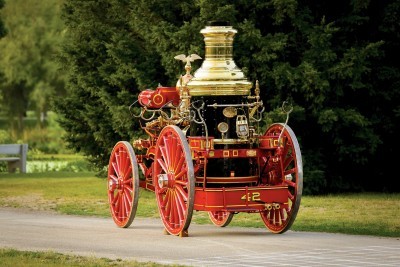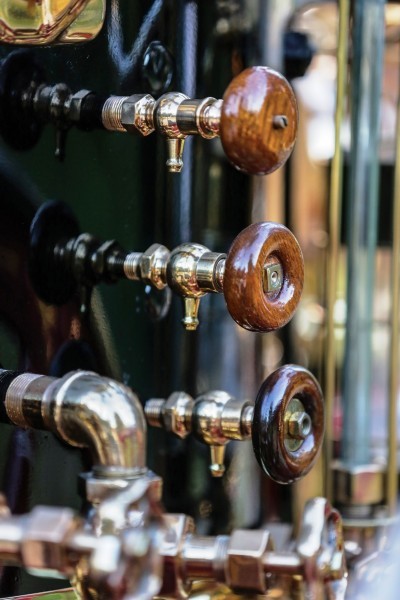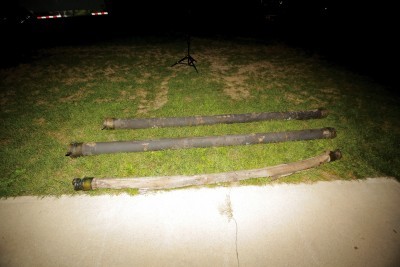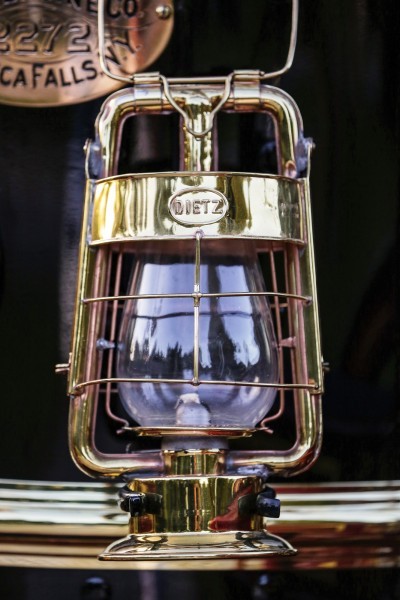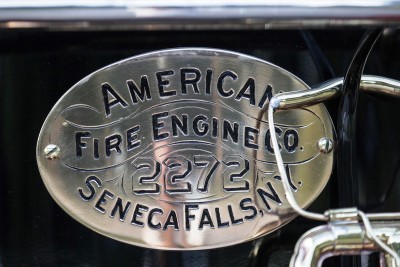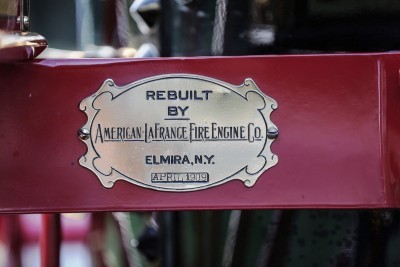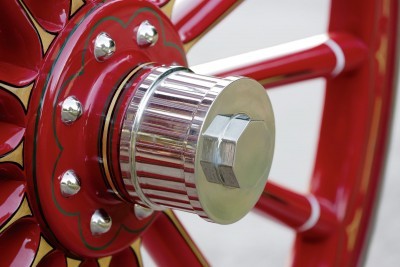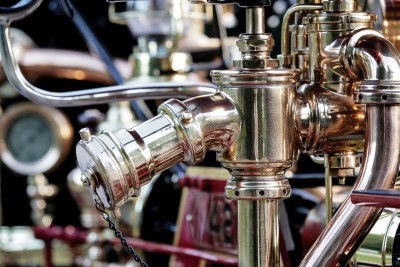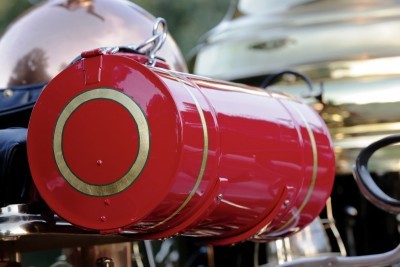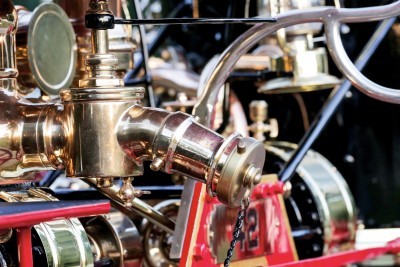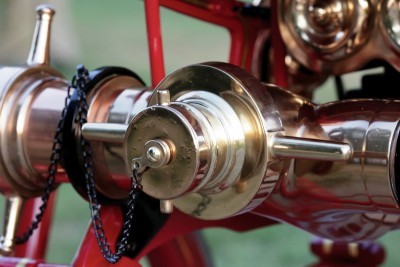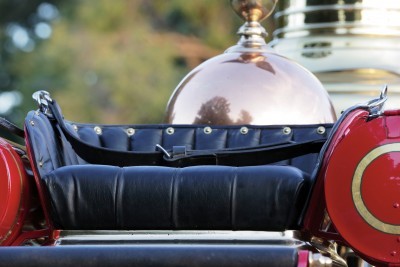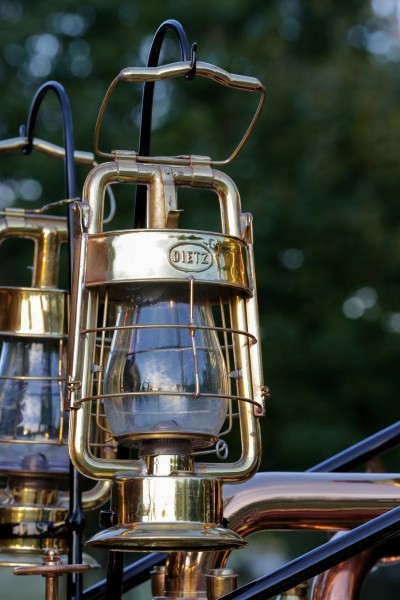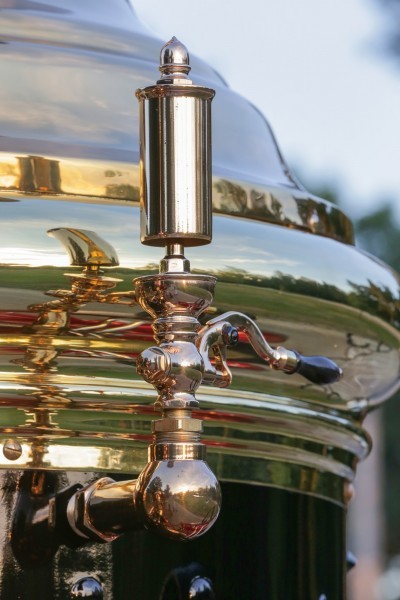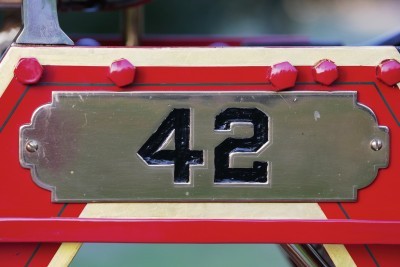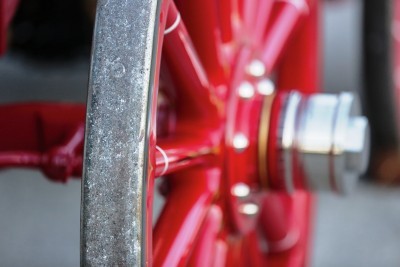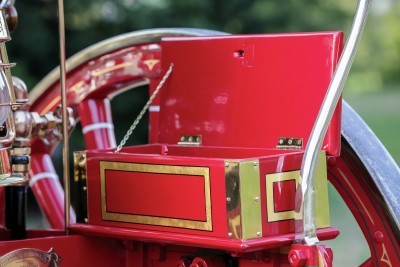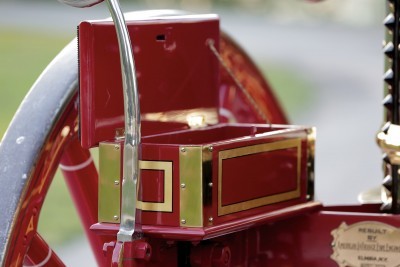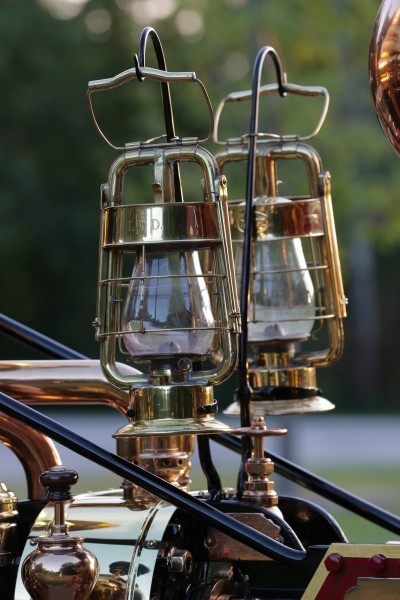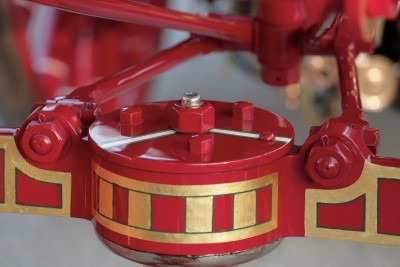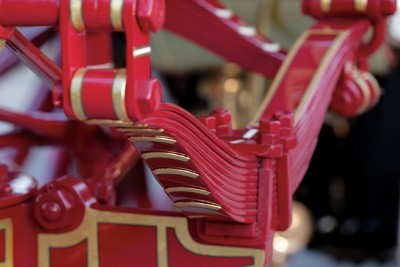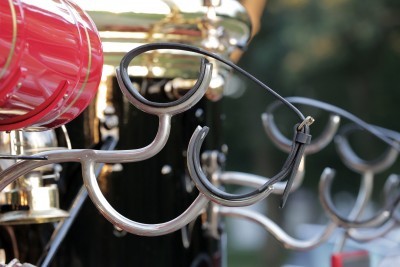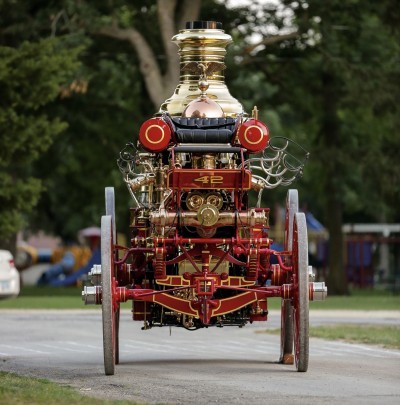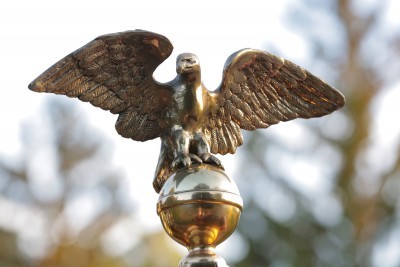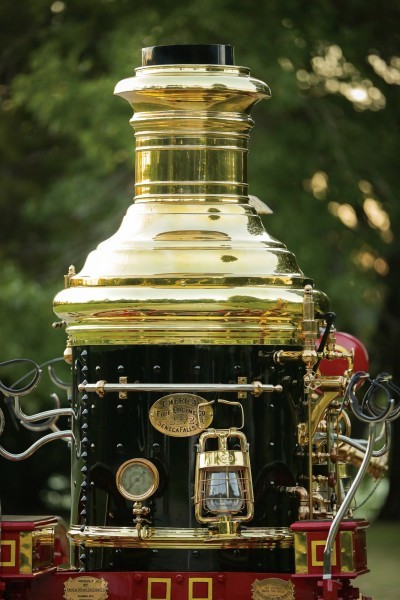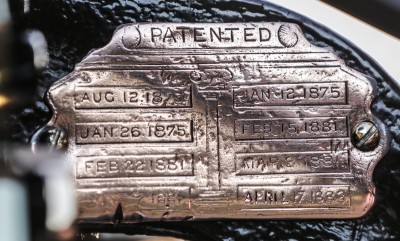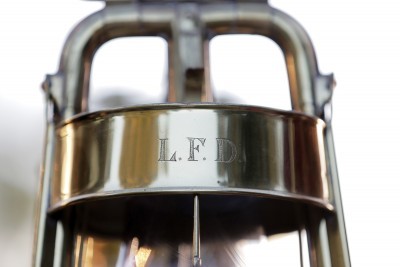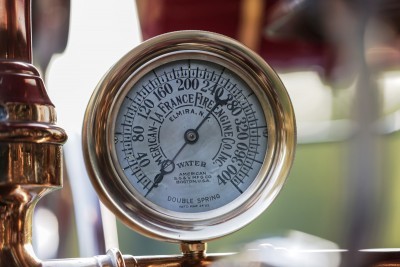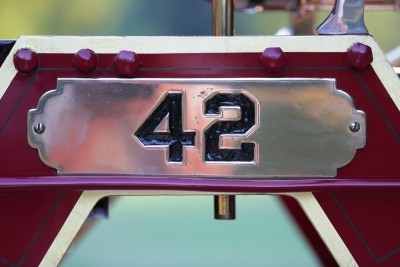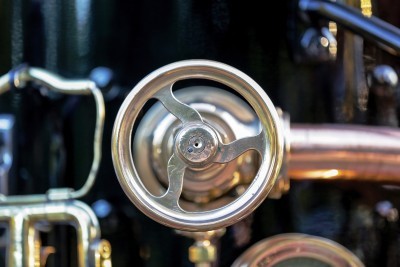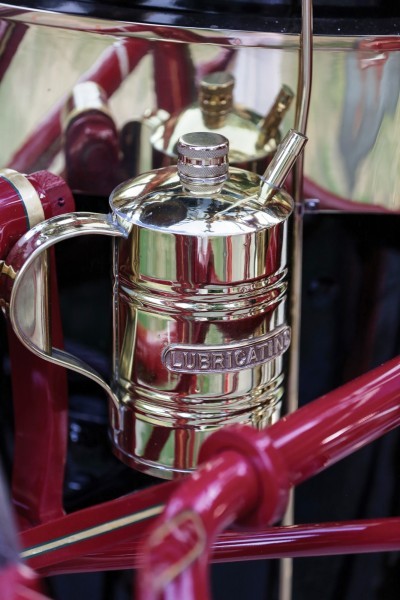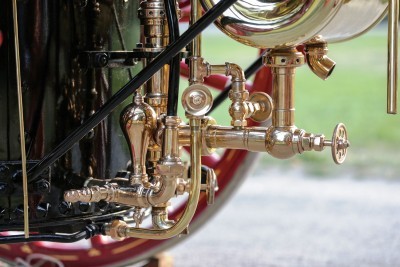Motorized, steam fire engines were some of the highest-tech wagons on the roads between 1850 and the dawn of the motorcar 50 years later.
The need for mechanized, high-volume water pumps to extinguish urban and industrial accidents was what drove such huge innovation at the time. These high-tech water wagons didn’t know at the time that their steam-engine solutions would spur internal combustion. For this machine, the steam boiler drove a turbine, which then drove a water pump. Hoses attached to the input would pull water through the system and out the main fire-fighting nozzles and ladders at high pressure and volume.
The 1894 American Fire Engine Co SILSBY Steam Pumper was still pulled to the scene of the blazes by horses, but it was pressurizing the boilers all the way there. The design similarity to a mini locomotive was no accident: the tech transfer was basically a miniaturized train engine. But sans the rubber tires that would have kept it upright around fast corners, with four horses up front!
This example is a terrific showcase of the design aesthetic and gilded style of the day, as well as being functionally important to automobiles and trucks supplanting horses in general only a few decades later.
This beauty sold for $264k at RM’s Amelia sale this year – with interesting details provided in the official brief below the photo gallery.
1894 SILSBY Horse-Drawn Steam Fire Engine

RM Auctions
Amelia Island 2016
Lot 185
1894 Silsby Fourth Size Horse-Drawn Steam Pumper
To be auctioned on Saturday, March 12, 2016
Sold for $264,000
- American Fire Engine Co. no. 2272
Photo Credit: Michael Ford ©2012 Courtesy of RM Sotheby’s
Vertical fire-tube Fox boiler, Silsby rotating-cam steam engine, and 500 gpm rotary pump. Wheelbase: 74 in.
- Four owners from new
- Continuous ownership history from Philadelphia’s Engine Company 42
- Meticulous 15-year restoration, with recent polishing and detailing
By the latter part of the 19th century, there were more than 80 manufacturers of steam fire engines in the United States. Most prominent among them, with more than 1,000 engines delivered during the era, was the Silsby Manufacturing Company of Seneca Falls, New York. Originally a maker of agricultural implements, Silsby expanded to fire engines and associated equipment, building its first such unit in 1856. In contrast to other manufacturers, which held to reciprocating engines and pumps, Silsby embraced rotary principles for both purposes, using the designs of Birdsill Holly, a pioneer in water power and the inventor of the frost-proof fire hydrant.
In a series of consolidations in December 1891 that presaged the rise of General Motors, Silsby merged with the Ahrens Manufacturing Company, the Clapp & Jones Manufacturing Company, and the Button Fire Engine Company to form the American Fire Engine Company. In 1903, the American Fire Engine Company joined with the LaFrance Fire Engine Company of Elmira, New York, to form American LaFrance. Demand for the rotary Silsby engines, however, was so strong that they remained in production until 1905.
This Silsby Fourth Size pumper is of the company’s final design, the so-called “ninth model” introduced in 1875, with a “crane” configuration with an arched frame. Its Fourth Size model designation refers to its pumping capacity of 500 gallons per minute. It was one of two delivered in 1894 to the Philadelphia Fire Department and was the first piece of apparatus delivered to Engine Company, organized on December 7th of that year.
The pumper remained in service with Engine Company 42 until 1922; in 1909, it was returned to the manufacturer’s successor company, American LaFrance, where it was rebuilt with a new Fox water-tube boiler. At its retirement at the time of the engine company’s motorization, it was purchased by a private owner and remained in his collection for 57 years, operated occasionally and as late as the 1960s. Finally, in 1979, it was acquired by a longtime collector of horse-drawn fire apparatus, in unrestored condition in the configuration of the 1909 rebuild and reportedly complete but for the Dietz brass lanterns.
A 15-year painstaking restoration followed, during which the engine and pump were reportedly disassembled, renewed, and rebuilt. Paint and detailing was done by Anderson Restoration of Kanawha, Iowa, whose work has been recognized with an abundance of AACA Grand National, Senior, and Junior awards. Since restoration, this pumper has been maintained as a display piece, never fired up nor operated, and in preparation for sale, it has been freshly polished and detailed in its current and only fourth ownership.
The Philadelphia Fire Department purchased 136 steamers over the course of 59 years, the last of which was in 1914 and remained in service until 1927. In the period from 1886 to 1897, the city was one of Silsby’s best customers, purchasing 41 pieces of the steam-operated apparatus. This unit, with its impressively crafted brass fitments and complete history from new, is the only known Silsby pumper remaining of the Philadelphia units, and it is certainly among the best of all survivors of the brand.

Tom Burkart is the founder and managing editor of Car-Revs-Daily.com, an innovative and rapidly-expanding automotive news magazine.
He holds a Journalism JBA degree from the University of Wisconsin – Madison. Tom currently resides in Charleston, South Carolina with his two amazing dogs, Drake and Tank.
Mr. Burkart is available for all questions and concerns by email Tom(at)car-revs-daily.com.

